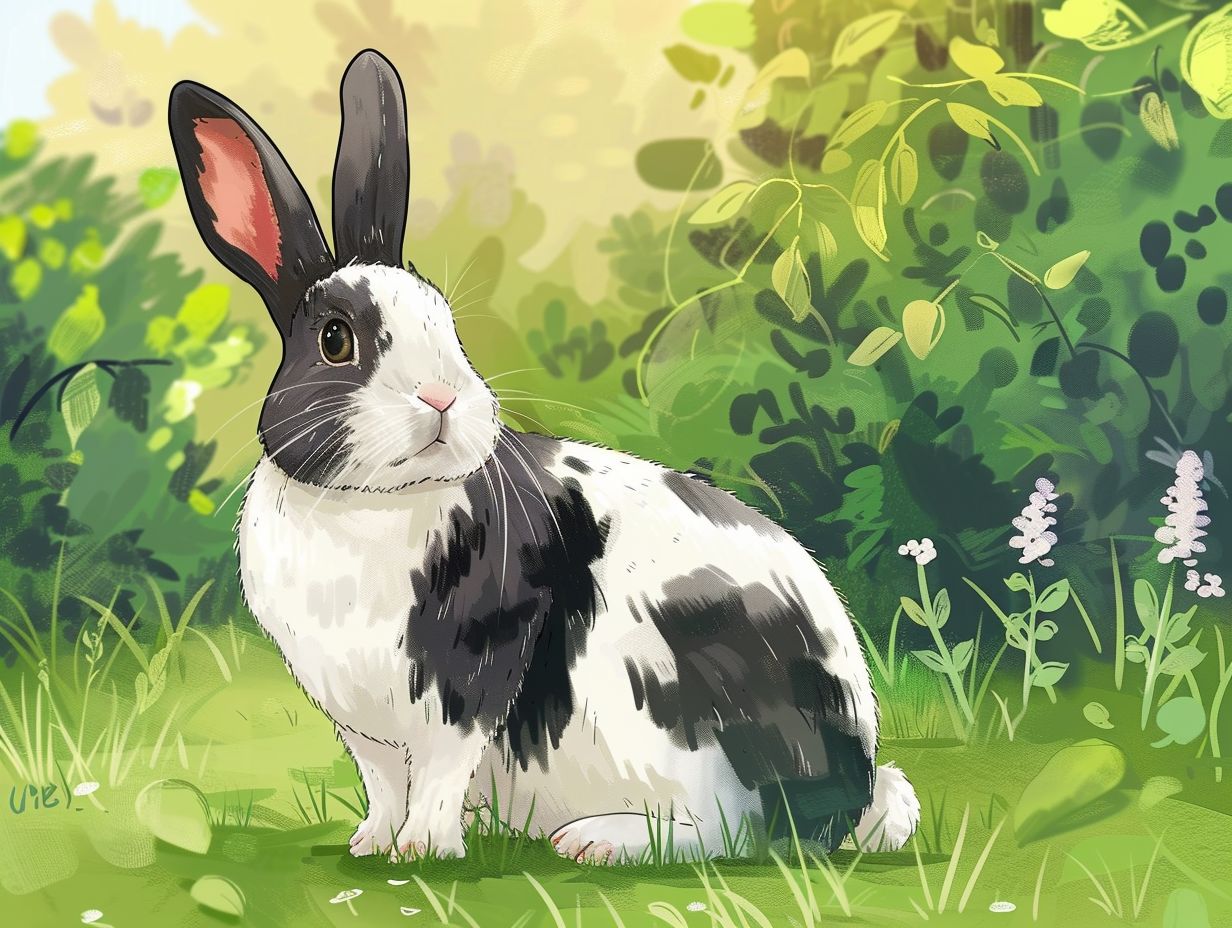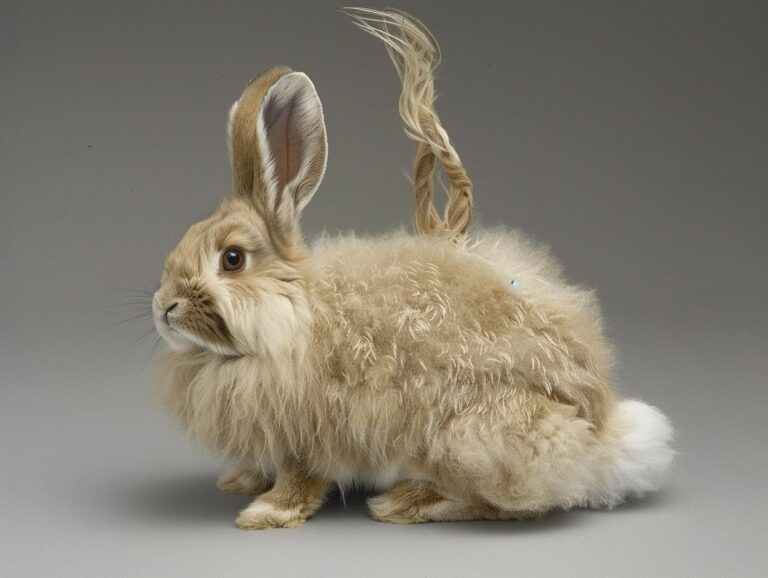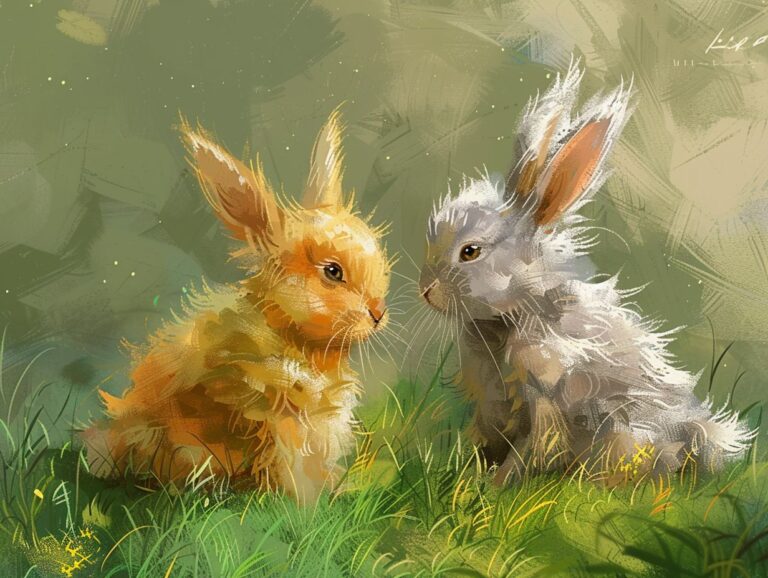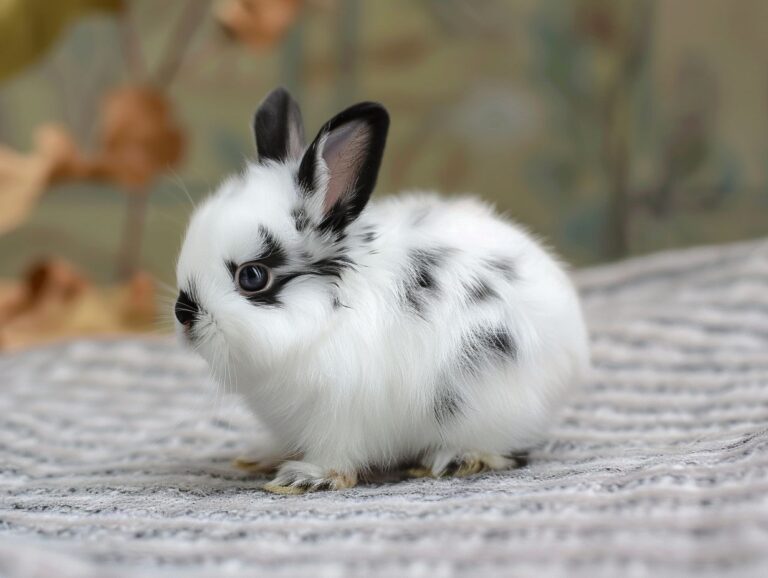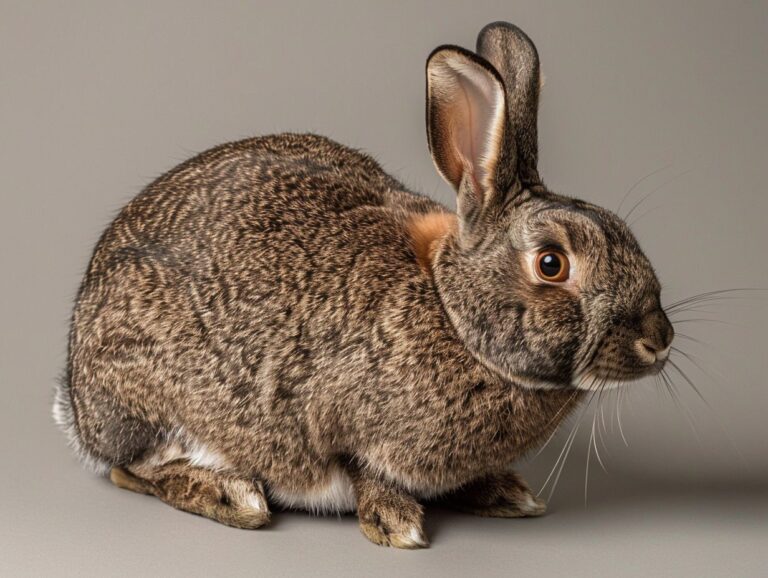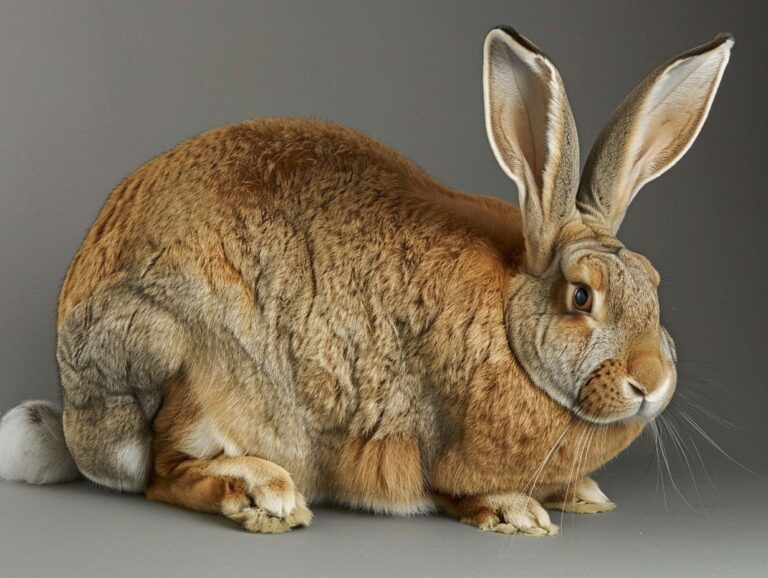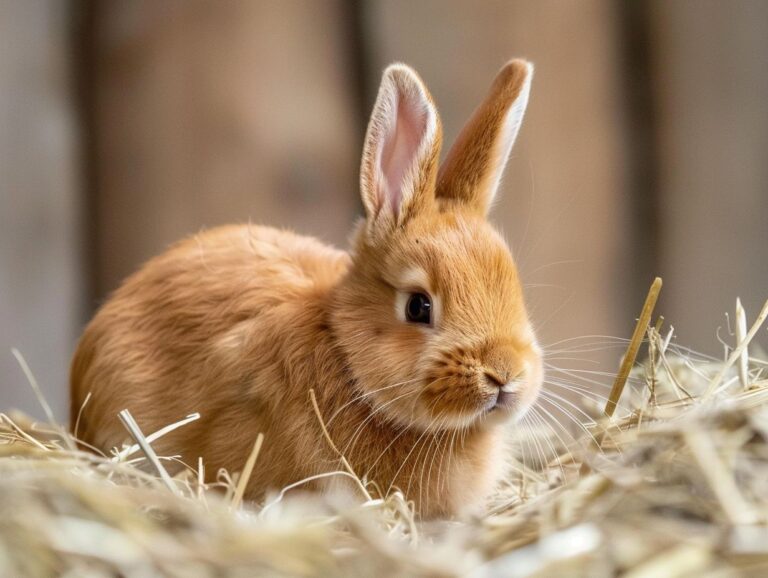Dutch Rabbit Breed: Characteristics, Care, History, and Breeding Practices
Curious about the Dutch Rabbit breed? This article covers everything you need to know about these adorable rabbits, from their unique markings to friendly temperament.
Explore the history of the Dutch Rabbit breed, learn how to care for them properly, and discover common health issues to watch out for.
Interested in breeding Dutch Rabbits? Find out how to select breeding stock, navigate the mating process, and care for the newborn litter.
Stay tuned for a comprehensive guide on Dutch Rabbits!
Key Takeaways:
What Is The Dutch Rabbit Breed?
The Dutch Rabbit is a breed of domestic rabbit known scientifically as Oryctolagus Cuniculus. Originating in England, these rabbits are cherished for their unique markings and friendly demeanor.
With their distinctive color pattern of colored ears, nose, feet, and a solid-colored back, Dutch Rabbits easily stand out in the rabbit world. Their friendly and outgoing nature makes them a popular choice for both beginners and experienced rabbit enthusiasts.
Belonging to the lightweight breed category, these rabbits have a compact yet muscular build, exhibiting a balanced appearance. Their small to medium size makes them suitable for indoor living spaces, and their manageable grooming needs add to their appeal as a companion animal. To learn more about the New Zealand rabbit breed, including their characteristics, care, history, and breeding practices, check out our comprehensive guide.
Although these rabbits are primarily kept for companionship and exhibition purposes, their history as a breed with roots dating back to the 18th century holds significant value.
What Are The Characteristics Of Dutch Rabbit Breed?
The Dutch Rabbit breed boasts distinctive markings, a compact size, various colors, and friendly behavior, making them popular pets. Their lively colors and patterns reflect their playful nature.
The Dutch Rabbits are known for their striking mantled coats that typically consist of a solid base color with distinct white markings on their face, chest, feet, and tail. These markings give them a charming and unique appearance, setting them apart from other breeds. Along with their eye-catching colorations, Dutch Rabbits are revered for their docile and sociable demeanor, often forming strong bonds with their human companions. Despite their small size, these rabbits are energetic and agile, enjoying interactive play and exploration. Their inquisitive nature and intelligence make them quick learners, making training sessions both fun and rewarding.
Unique Markings
Dutch Rabbits are renowned for their unique markings, often characterized by a striking contrast between their solid base color and a distinct band of white around their bodies, resembling a belt.
Apart from their signature white band, Dutch Rabbits exhibit a wide array of color combinations and patterns. Common color variations include black, blue, gray, steel, and tortoiseshell. Their fur can have markings such as butterfly, spotted, or shaded patterns, making each Dutch Rabbit truly unique. The significance of these markings goes beyond aesthetics, as they play a role in distinguishing different bloodlines within the breed. Breeders often value specific markings and colors that align with the traditional standards of Dutch Rabbits.
Compact Size
Despite their small size, Dutch Rabbits are robust and sturdy, making them suitable for various living spaces both indoors and outdoors. Their compact stature adds to their charm and adaptability.
Their petite bodies are characterized by short, round faces and alert eyes, giving them an endearing appearance. Due to their small size, Dutch Rabbits are agile and quick on their feet, making them excellent at darting in and out of tight spaces. This trait not only enhances their ability to explore their surroundings but also helps them evade potential predators. Their petite frames contribute to efficient energy utilization, allowing them to thrive in diverse habitats with minimal resource consumption.
Friendly Temperament
Characterized by a friendly temperament, Dutch Rabbits exhibit sociable and affectionate behavior towards their human companions. Their docile nature and love for interaction make them ideal pets.
When given proper attention and care, Dutch Rabbits thrive in human company, often seeking affection and companionship. They enjoy cuddling and will often nuzzle their noses against their owner’s hand as a sign of love and trust. It’s not uncommon to see Dutch Rabbits hop around their humans, eager for attention and playtime. Their friendly nature extends to their interactions with children and other pets in the household, making them excellent family pets.
Easy to Handle
Given their calm and gentle nature, Dutch Rabbits are easy to handle, making them suitable pets for individuals of all ages. Their amiable personality and cooperative behavior enhance their appeal.
In terms of interacting with Dutch Rabbits, it’s important to approach them with patience and gentleness. These rabbits respond well to a calm and reassuring touch, creating a bond of trust between the pet owner and the rabbit. It is advisable to pet them gently, avoiding sudden movements that may startle them. Creating a peaceful and secure environment for these rabbits ensures they feel safe and comfortable during handling.
One effective technique for handling Dutch Rabbits is to support their bodies fully, providing a sense of security and stability. By cradling them close to your chest and supporting their hindquarters, you prevent any potential discomfort or fear. Speaking softly to them while in contact can help reassure and soothe the rabbits, fostering a positive association with human touch.
What Is The History Of Dutch Rabbit Breed?
The history of the Dutch Rabbit breed dates back to its origins in England, where breeders developed them for their unique markings and compact size. Over time, Dutch Rabbits gained popularity as pets and show animals.
Introduced around the mid-19th century, Dutch Rabbits quickly caught the attention of breeders and enthusiasts due to their striking contrast between their white body and colored markings. The selective breeding efforts led to the refinement of their distinctive markings, with breeders aiming for a crisp line where the colors meet.
Notable figures in the Dutch Rabbit’s history include William Pape and Lewis Wright, who played pivotal roles in promoting and standardizing the breed. Pape, an English breeder, is credited with elevating the breed’s status, while Wright’s writings and advocacy further propelled the Dutch Rabbit into the spotlight.
Origin

The Dutch Rabbit breed originated in England during the 19th century, with breeders aiming to create rabbits with unique markings and a compact size appealing to both pet owners and show enthusiasts.
This breed’s distinct appearance, characterized by a bold helmet pattern on its head, white blaze running down its face, and a colored body with a white belly, is a result of careful breeding efforts. The Geographical influences played a significant role in the development of the Dutch Rabbit, with breeders in the Netherlands further refining the breed to its current recognized standard. These rabbits were bred not only for their aesthetics but also for their friendly temperament and suitability for both indoor and outdoor environments.
Development
The development of the Dutch Rabbit breed involved meticulous selective breeding to enhance their unique markings and color patterns. Breeders dedicated efforts to refine the breed’s appearance and temperament across generations.
Over time, the Dutch Rabbits evolved prominently due to careful breeding practices. Breeders focused on consistently selecting individuals with the most striking black and white markings, a defining feature of the breed. These distinct patterns have become a hallmark of Dutch Rabbits, setting them apart from other breeds in the rabbit world.
The breed’s temperament was also carefully cultivated through selective mating. By consistently choosing rabbits with friendly, docile dispositions, breeders ensured that Dutch Rabbits were not only visually appealing but also amiable companions. This dual emphasis on both appearance and personality has solidified the Dutch Rabbit’s reputation as a highly sought-after breed among enthusiasts.
Popularity
Due to their charming appearance and amiable nature, Dutch Rabbits became immensely popular, attracting both pet owners and exhibitors in various rabbit shows and competitions.
These rabbits are widely known for their distinctive color pattern, featuring a stark white body with colored markings around their eyes, ears, and on the back. The combination of their friendly temperament and striking visual appeal makes them a favorite choice for families seeking a companionable pet.
Dutch Rabbits have made a mark in show circuits due to their agility and agility on the competition stage. Their success in agility challenges and breed-specific contests has garnered them a reputation as top contenders in rabbit shows worldwide. Notable wins and achievements have solidified their position as prized show animals, further fueling their popularity among enthusiasts and breeders alike.
How To Care For A Dutch Rabbit?
Ensuring proper care for a Dutch Rabbit involves creating a suitable living environment, providing a balanced diet, regular grooming, and opportunities for exercise and mental stimulation.
When setting up a living space for your Dutch Rabbit, ensure they have a spacious enclosure with room to hop around and hide. Include a cozy sleeping area and provide ample hay for burrowing and nibbling. Keep their living area clean and dry to prevent health issues.
For their diet, offer a variety of fresh vegetables, high-quality hay, and a small amount of pellets. Make sure they always have access to fresh water. Regularly groom your Dutch Rabbit by brushing their coat to prevent matting and check their nails for length. Engage them in play and provide toys to encourage physical activity and mental stimulation.
Housing
Creating a comfortable and secure living space is crucial for Dutch Rabbits. They require adequate space to move around freely and explore, along with sheltered areas for rest and relaxation.
In terms of housing Dutch Rabbits, providing a spacious enclosure is essential to mimic their natural habitat and ensure they lead a healthy and happy life. Space is not the only factor to consider; sturdy construction is also vital to keep them safe from predators and the elements. Dutch Rabbits are known for their energetic and curious nature, so incorporating enrichment such as tunnels, ramps, and platforms can promote physical activity and mental stimulation. By creating a thoughtfully designed living environment, owners can cater to the specific needs of these adorable and intelligent creatures.
Diet
Maintaining a nutritious diet is essential for the health of Dutch Rabbits. Their diet should consist of high-quality hay, fresh vegetables, and a limited amount of pellets to ensure a well-rounded nutritional intake.
Dutch Rabbits, like all rabbits, have sensitive digestive systems that require a diet rich in fiber to maintain gut health. Hay is a crucial component of their diet as it aids in digestion and keeps their teeth worn down. Fresh vegetables such as dark leafy greens, carrots, and herbs provide essential vitamins and minerals. Pellets should be given in moderation as they can be high in calories, leading to obesity. It is important to provide a variety of vegetables to ensure a balanced diet and avoid selective eating.
Exercise
Regular exercise is vital for the well-being of Dutch Rabbits, as it helps maintain their physical health and mental stimulation.
Engaging Dutch Rabbits in physical activities not only supports their physical fitness but also plays a crucial role in preventing obesity, digestive issues, and boredom-related behaviors. Incorporating exercise wheels, tunnels, and climbing structures in their living environment can encourage movement and agility. Setting up obstacle courses or hide-and-seek games can provide mental challenges that stimulate their cognitive abilities. Ensuring a balanced mix of activities such as running, hopping, and exploring will contribute significantly to the overall happiness and well-being of these intelligent and active rabbits.
Grooming
Regular grooming is essential to keep Dutch Rabbits clean and healthy. This includes brushing their fur, trimming nails, and checking for any signs of matting or skin issues.
Dutch Rabbits have dense fur that requires regular brushing to prevent matting and remove loose hair. Brushing not only helps in maintaining a healthy coat but also promotes bonding between the pet and its owner.
In terms of Rhinelander rabbit breed, it is crucial to use proper tools and techniques to avoid accidental injury. Have styptic powder on hand in case of any bleeding mishaps.
Along with grooming, maintaining proper hygiene practices such as cleaning their living area regularly is crucial for their overall well-being.
What Are The Common Health Issues Of Dutch Rabbits?

Dutch Rabbits are prone to various health issues, including dental problems, respiratory infections, and gastrointestinal stasis. Understanding these common ailments is crucial for maintaining their well-being.
In terms of dental issues, Dutch Rabbits are particularly susceptible to overgrown teeth, a condition that can lead to difficulty in eating and even abscesses if left untreated. Regular check-ups with a specialized vet can help prevent these problems.
Respiratory infections are another concern for these rabbits, often caused by poor ventilation or exposure to drafts. Keeping their living environment clean and providing adequate ventilation can reduce the risks of such infections. Learn more about the rex rabbit breed.
Gastrointestinal stasis, a condition characterized by a slowdown or stoppage of the digestive system, is also a common ailment amongst Dutch Rabbits. Symptoms include decreased appetite, bloating, and reduced fecal output. Ensuring they have a balanced diet rich in fiber can help prevent gastrointestinal issues. If any concerning symptoms arise, seeking prompt veterinary care is paramount for a swift and effective treatment plan.
Dental Problems
Dental problems, such as overgrown teeth and malocclusion, are common in Dutch Rabbits due to their continuously growing teeth. Proper dental care and a suitable diet can help prevent these issues.
Overgrown teeth in Alaskan rabbits occur when their teeth do not wear down naturally, leading to sharp points that can cause problems with eating and grooming. Malocclusion, where the teeth do not align properly, can result in difficulty chewing and pain.
Signs of dental issues in rabbits include drooling, decreased appetite, weight loss, and reduced grooming. To prevent these problems, provide suitable chew toys, a balanced diet high in fiber, and regular dental check-ups by a veterinarian specializing in rabbit care.
Respiratory Infections
Respiratory infections are a concern for Dutch Rabbits, often caused by environmental factors or underlying health conditions. Recognizing symptoms early and seeking veterinary care is essential for effective treatment.
These infections can manifest through various signs, including sneezing, nasal discharge, and coughing. In severe cases, rabbits may exhibit shortness of breath and loss of appetite. The primary causes of respiratory issues in Dutch Rabbits are pneumonia, bacterial infections, and environmental irritants.
To address these concerns, it is crucial to maintain a clean living environment for your rabbit, ensuring proper ventilation and humidity levels. Regular health check-ups play a vital role in the prevention and early detection of respiratory problems.
Gastrointestinal Stasis
Gastrointestinal stasis, characterized by a slowdown in the digestive system, can affect Dutch Rabbits. Maintaining a high-fiber diet and providing adequate hydration can help prevent this condition.
When a Dutch Rabbit experiences gastrointestinal stasis, it may exhibit signs such as reduced appetite, decreased activity levels, and a lack of fecal pellets. These symptoms indicate a potential digestive issue that needs immediate attention. Factors such as stress, inadequate fiber intake, and sudden changes in diet can contribute to gastrointestinal stasis.
It’s crucial to monitor your rabbit’s diet, ensuring they have access to plenty of hay and fresh water. Regular exercise and environmental enrichment can also aid in preventing digestive complications in Dutch Rabbits.
How To Breed Dutch Rabbits?
Breeding Dutch Rabbits involves selecting appropriate breeding stock, facilitating the mating process, managing gestation and birth, and ensuring proper care for the newborn litter. Attention to breeding practices is essential for healthy offspring.
When selecting breeding stock for Dutch Rabbits, it is crucial to choose individuals with desirable traits such as good temperament, healthy physical attributes, and a proven genetic lineage.
Ensuring that both the male and female rabbits are in optimal health is vital for successful Belgian Hare rabbit breed outcomes.
Introducing the rabbits for mating should be done carefully to prevent aggression and ensure a successful Himalayan rabbit breed breeding process.
During the pregnancy period, it is important to provide the doe with a comfortable and stress-free environment. Monitoring her nutrition, ensuring she receives adequate exercise, and regular veterinary check-ups are essential for a successful American rabbit breed.
Preparing a suitable nesting box where the doe can give birth and care for her litter in a quiet and secluded area is crucial.
Selecting Breeding Stock
Choosing the right breeding stock is crucial for maintaining the quality and characteristics of Dutch Rabbits. Factors such as health, temperament, and conformation play a key role in the selection process.
Health is paramount as it ensures the well-being of both the rabbits and their offspring. A breeder must carefully assess the genetic history of potential stock, looking for any hereditary issues that could be passed on. For more information on Polish rabbit breed characteristics, care, history, and breeding practices, visit the link.
In terms of temperament, choosing rabbits with friendly and calm dispositions like the Florida white rabbit breed can positively impact handling and socialization efforts.
Physical attributes like proper body conformation and desirable coat coloration are also essential considerations, contributing to the overall breed standard and aesthetic appeal.
Mating Process
The mating process for Dutch Rabbits involves pairing compatible individuals, ensuring a conducive environment, and monitoring breeding behaviors. Proper timing and supervision are essential for successful mating.
When pairing Dutch Rabbits, it is crucial to introduce them in a neutral territory to avoid territorial aggression. Observing their behavior can give cues about their readiness for mating, such as increased sniffing, mounting, and chasing. It is recommended to pair the rabbits in the evening or early morning, as they are more active during these times and are likely to engage in mating behaviors. Providing a quiet and stress-free environment can help set the mood for successful copulation.
Gestation and Birth
During gestation and birth, Dutch Rabbits require a comfortable nesting area, proper nutrition, and monitoring for birthing complications. Understanding the stages of pregnancy and postnatal care is vital for successful breeding.
A pregnant Dutch Rabbit needs a quiet and secluded nesting spot to feel secure. Providing a cozy nest box lined with soft hay or straw promotes a stress-free environment.
- Secondly, nutrition plays a crucial role in supporting the health of both the mother and the developing litter. High-quality hay, fresh vegetables, and a small amount of pellets should comprise the diet during pregnancy.
Monitoring the pregnant doe closely for any signs of distress or complications, such as difficulty in birthing or abandoned kits, is essential for ensuring a smooth delivery and healthy newborns.
Caring for the Litter

Ensuring the warmth of the baby rabbits is crucial during their initial weeks. Providing a cozy, draft-free environment with bedding for them to snuggle in helps regulate their body temperature. Considering their delicate digestive systems, a proper feeding schedule is vital. Mother’s milk is the best source of nutrition, but if unavailable, specialized milk replacers are available. Hygiene plays a significant role; keeping their nesting area clean and dry helps prevent infections. Regularly checking on the kits’ development and promptly addressing any deviations is key to ensuring their well-being.
Frequently Asked Questions
What are the physical characteristics of the Dutch Rabbit breed?
The Dutch Rabbit breed is known for its distinctive markings, with a white blaze and a colored saddle marking. They have short, rounded bodies and weigh between 3.5-5.5 pounds. Their ears are upright and come in a variety of colors, including black, blue, chocolate, and more.
What type of care do Dutch Rabbits require?
Dutch Rabbits are low-maintenance pets that require daily feeding and access to fresh water. They should also have a clean living space with plenty of room to hop and play. Regular grooming is recommended, including brushing their fur and trimming their nails. They should also receive annual veterinary check-ups.
What is the history of the Dutch Rabbit breed?
The Dutch Rabbit breed originated in the Netherlands in the 1830s. They were bred for their unique markings and were popular pets among the upper class. They were later introduced to England in the 1860s and quickly gained popularity as show rabbits. Today, they are one of the most recognized and beloved rabbit breeds.
What are some important factors to consider when breeding Dutch Rabbits?
Breeding Dutch Rabbits requires careful consideration and planning. It is important to select healthy and genetically diverse rabbits for breeding to prevent potential health issues. Breeding should only be done by experienced individuals to ensure the safety and well-being of the rabbits and their offspring.
What are some common health concerns for Dutch Rabbits?
Dutch Rabbits are generally healthy animals, but they are prone to certain health issues such as ear mites, respiratory infections, and obesity. Regular check-ups with a veterinarian can help prevent and treat these problems. It is also important to provide a balanced diet and regular exercise to maintain their overall health and well-being.
Are Dutch Rabbits suitable as pets for children?
Yes, Dutch Rabbits can make wonderful pets for children, as they are generally friendly, social, and easy to handle. However, parents should always supervise interactions between young children and rabbits to ensure the safety of both. It is also important to teach children proper handling techniques and responsibilities when caring for a pet rabbit.

